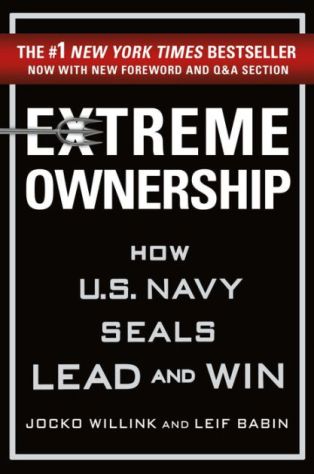
Extreme Ownership by Jocko Willink and Leif Babin
Summary
Extreme Ownership highlights leadership lessons from two Navy SEAL officers. The book shows a story from their time in deployment, followed by explaining the principle of the chapter, and finally an anecdotal story illustrating how the principle had been applied as they consulted within a business environment. The book focuses on the leader putting effort into identifying what is within their control and focusing their efforts on doing whatever they can to be a more effective leader. Many times, blame can be shifted elsewhere, but Extreme Ownership looks at taking the blame and putting action into getting better. If something went bad, learn from it and then put even more effort in to prevent it from happening soon or anytime in the future. A leader often has subordinates below and leaders above them. It is a leader’s job to lead both directions, meaning using the appropriate approach, but being adamant in explaining the reason for actions. Without telling people why, it is hard to get full buy in. As you communicate, it is imperative to instill trust in each direction. A leader needs to be trusted by others, and the leader too, must display a sense of trust towards others. Leadership is simple, you take ownership of yourself to ensure the greatest outcome possible for the team. While simple, it is challenging working with others where there are often many possible action steps, yet it can be very rewarding.
How it influenced me
There were multiple instances of seeing a topic which resonated with something I had heard but liked the refreshing mention and the manner in which it was described. I am big on learning from mistakes but seeing the example of learning from a mistake while deployed, changing steps to prevent it, and then a year later in training making sure to adapt training to prevent a similar mistake was inspiring. Going further in the learning and improvement can make a difference. It was nice seeing these leaders emphasize the need to tell others why, behind certain actions. There are many instances of resources and leaders saying how important this is and in doing so can result in greater buy in and trust. Something that resonated regarding trust was the need to fully communicate rationale up and down the chain of command and to trust up and down as well. I think I have held this belief, but at times have been better at communicating rationale or trusting in one direction, when truly it is better to do both up and down. Moving forward, I will strive to be more effective in my communication and trust.

